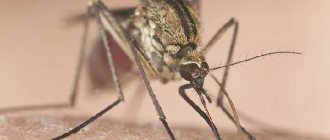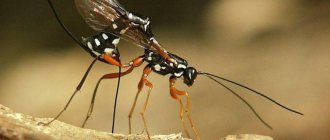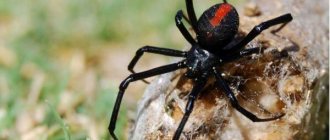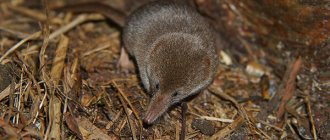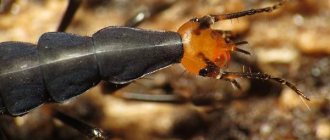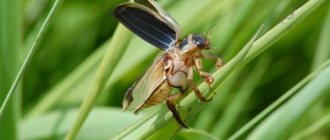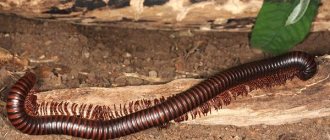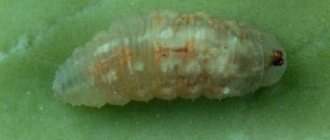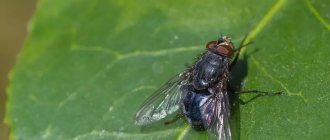Species of Drosophila fly
Among the one and a half thousand species of Drosophila known to science, the most common are:
- fruit - body size from 2.5 mm to 3.5 mm, wingspan 6 mm, yellowish-brown color;
- black - small brown midge, body 2-3 mm, most often found in beds with berries;
- flightless - individuals belonging to this species have underdeveloped wings, so they crawl or flutter;
- large - differs from the others only in that it grows to 4.5 mm.
In general, the differences between fruit flies of different species are very insignificant and only a specialist can detect them.
Why do Drosophila flies appear in the house and why are they harmful?
Most often, fruit flies appear in the house by accident. Factors that increase the likelihood that insects will be interested in an apartment are:
- spoiling fruits or vegetables, unopened compote or a bowl of jam;
- garbage, dirty dishes, leftover food on the table;
- alcohol residues in glasses or unclosed bottles;
- abundant feeding of flowers with organic fertilizers;
- abundant watering of indoor plants.
On flowers
As mentioned above, fruit gnats are not dangerous to people or pets. But after fruit flies appear in the house, household members begin to experience discomfort from small insects chaotically moving in the air, which now and then end up in food, then in water, then in the mouth or nose. In addition, if you eat fruits or berries with midge larvae, the result may be indigestion and intestinal upset.
Where do fruit flies come from?
Drosophila cannot be called good flyers, so most often they themselves end up in apartments and houses from nearby places, or they are brought, without knowing it, by residents. Midges can fly into the window; they can be brought in by a dog or cat coming from a walk.
From fruits and vegetables
Drosophila fruit flies most often enter homes with fruits or berries purchased at the market or collected in the garden. These do not have to be adult insects. Perhaps eggs were laid on one of the fruits. These will hatch into larvae that will soon become adult fruit flies.
From the ground
Another way the fly appears is in garden soil. Regardless of whether the soil was taken from the garden or special soil purchased from the store, it can be infested with insects.
Through ventilation
Drosophila have an excellent sense of smell, so if they smell the aroma of rotting fruit or fermented compote, the insect will fly in from any neighboring room. Midges can get into the apartment from neighbors and from the basement.
From indoor plants
Females often lay eggs on indoor plants or in the ground. Excessive soil moisture and some types of fertilizers provoke the rapid development of insects and soon a horde of small midges appears in the house.
From leftover food
Leftover food on dirty dishes, peeling vegetables and fruits in the trash can - all of this produces a specific smell that attracts insects. If fruit flies have appeared in the kitchen, then even after the garbage has been removed, they will still circle for some time, waiting for a new portion.
Description and appearance
Drosophila are fruit flies from the order Diptera. More than 1,500 species have been described, but scientists suggest that there are actually several thousand species in nature. Many species of Drosophila are synanthropic.
It is not difficult to recognize the insect. This is a small brownish-yellow midge with transparent wings that are slightly longer than the body. The color may be darker or lighter depending on the species and living conditions. Body sizes range from 1.5 to 2.5 mm, with males smaller than females.
You can recognize a male not only by size. If you look under a microscope, you will notice that the back of the male's abdomen is almost black and covered with pointed bristles. Most of the fruit fly's head is occupied by convex, compound, red eyes.
Appearance
Drosophila are widely used for a variety of genetic research. In particular, this is the genetic modeling of certain diseases, including Alzheimer's disease and Parkinson's disease. Fruit flies are also used to assess the effects of certain medications and to study the mechanism of immune functioning.
Lifestyle
Fruit flies are heat-loving insects. They prefer temperatures above +16⁰С, so the vast majority of species live in regions with warm climates, and insects feel most comfortable in the subtropics and tropics. In temperate climates, midges with black or brown bodies appear only in the summer, and in the winter they try to find a warm shelter.
Drosophila are very fussy insects. Since they do not live long, the main task of the female Drosophila is to have time to leave offspring. It is enough for a female to mate with a male once in order to begin laying later (over the course of a lifetime, Drosophila lay up to 400 eggs, and according to others, up to 1000 eggs).
Life cycle and reproduction
Drosophila reproduce like most other insects - by laying eggs. The life cycle of an insect consists of 4 stages:
- egg (size about 0.5 mm, stage lasts about a day);
- larva (develops within 5 - 8 days);
- pupa (the skin of the larva becomes hard, under its protection an adult forms within 4-5 days);
- imago.
The sex of Drosophila is determined not by the presence of a Y chromosome, as, for example, in humans, but by the ratio of the number of sex chromosomes to the number of autosomes (that is, chromosomes that both sexes have) in the genotype.
Drosophila reproduce quickly; the entire cycle, depending on temperature conditions, takes from 10 to 20 days. In addition, reproduction occurs throughout the year. Therefore, fruit flies are considered among the most prolific of all creatures on the planet.
Larvae
When Drosophila larvae first emerge from eggs, they are about 3.5 mm in size. These are thin white worms that immediately begin to eat. The first food is the pulp and juice of the fruit on which the larva was born, as well as microorganisms that contribute to its decay.
During its development, the larva molts twice. The first molt occurs one day after hatching, the second after 2 days. Each time the larva increases in size.
What does the Drosophila fly eat?
Fruit flies eat both the larval and adult stages. The most preferred fermentation products for them are fruits and vegetables that have begun to spoil, fermented fruit drinks, low-strength alcohol (mainly beer, wine and liqueurs), jam, fruit compotes and juices. In addition, insects feed on plant sap, rotting plant debris, and the larvae eat some microorganisms.
Nutrition
Do fruit flies bite?
Drosophila have no interest in blood, are not predators, and are simply incapable of causing any damage to human skin. These midges do not bite, do not suck blood, and are not carriers of pathogens.
In a situation where someone complains of fruit fly bites, there is only one option. Most likely the person was attacked by another midge or some other insect.
Natural enemies of fruit flies
In nature, fruit flies do not have many enemies. Small midges are in danger from spiders, some insectivorous insects, and the larvae can be attacked by birds. In addition, the natural enemies of fruit flies are carnivorous flowers.
How long do they live?
The lifespan of Drosophila depends on environmental conditions, primarily on temperature. The optimal temperature for the development and existence of flies is +22…+25⁰С. High humidity is more comfortable for them. Under such conditions, fruit flies live 1–1.5 months. In general, the lifespan of these insects varies from a week to 2.5 months. Naturally, a midge will live much shorter without food.

